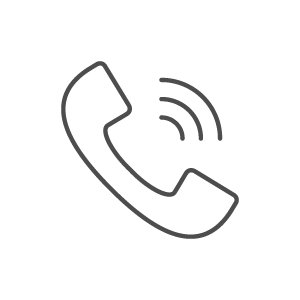Safe Wisdom Teeth Removal
Our dentists at Dental Clinic Vienna Döbling, ensure safe and gentle wisdom tooth extractions. Trust our expertise to protect your oral health.

Your Health Comes First: Everything You Need to Know About Wisdom Teeth
Removing wisdom teeth is often necessary to ensure your long-term oral health and well-being. At our dental clinic, we provide comprehensive and professional care for wisdom tooth extractions, supported by the latest technology.
What Are Wisdom Teeth?
Wisdom teeth, also known as third molars, are the last teeth to develop in the human mouth. They usually emerge between the ages of 17 and 25 but can also appear later—or not at all. The name “wisdom teeth” comes from the idea that people are more mature and “wiser” at this age.
Dentally referred to as “eighths”, these teeth are located at the very back of the jaw and were originally useful for chewing tough foods like raw meat and roots. With the evolution of tools and softer diets, their function has become largely unnecessary.
In many cases, there isn’t enough space in the jaw for wisdom teeth to fully emerge, which can lead to pain and various dental issues. For this reason, wisdom teeth removal is often recommended.
Reasons for Wisdom Tooth Removal
There are several important reasons why the removal of wisdom teeth is often recommended.
One of the most common reasons is lack of space in the jaw. Wisdom teeth often do not have enough room to fully emerge, which can cause other teeth to shift and lead to misalignment. This can affect not only the appearance of your smile but also the proper function of your teeth.
Another frequent reason for wisdom tooth removal is inflammation and infection. When wisdom teeth only partially erupt or grow at an angle, they can create gum pockets that trap bacteria. This can lead to infections that may spread to surrounding tissue and cause significant pain or swelling.
Because of their position at the back of the mouth, wisdom teeth are difficult to clean and therefore particularly prone to cavities and gum disease. This increases the risk of tooth decay and periodontitis, which can compromise the health of nearby teeth. In some cases, cysts or even tumors may form around wisdom teeth, potentially damaging the jawbone and surrounding tissue.
Treatment Procedure
Wisdom tooth removal is a routine but important procedure that is performed gently and precisely at our dental clinic. The process is divided into several key steps:
1. Diagnosis and Planning
The treatment begins with a thorough examination of your teeth and jaw. In addition to standard X-rays, we also use cone beam computed tomography (CBCT) in more complex cases. This high-resolution 3D imaging provides a detailed view of the wisdom teeth and their position in the jawbone, particularly in relation to nerves and neighboring teeth. It allows us to plan the procedure precisely and minimize potential risks.
We then discuss which anesthesia option is best for you—local anesthesia, sedation, or general anesthesia—depending on the complexity of the extraction and your personal comfort.
2. Preparation
On the day of the procedure, the treatment area is carefully disinfected, and you receive local anesthesia to ensure a completely pain-free experience. In certain cases, sedation may be used to reduce stress or anxiety.
3. The Procedure
Once the anesthesia has taken effect, the wisdom teeth are removed. If the teeth have fully erupted, they can often be extracted easily. In cases where teeth are impacted—partially or completely trapped under the gum or within the jawbone—the gum is gently opened, and a small portion of the bone may be removed to access the tooth. The tooth is then extracted either in one piece or divided into smaller sections to make the process less invasive.
The duration of the procedure varies depending on the position and condition of the wisdom teeth but typically lasts between 15 and 60 minutes.
4. Wound Closure
After removal, the surgical site is thoroughly cleaned and closed with sutures to promote optimal healing.
5. Aftercare and Healing
After the procedure, you will receive detailed aftercare instructions. Applying cold compresses helps reduce swelling, while pain medication ensures comfort during recovery. During the first few days, you should eat soft foods and avoid hard, spicy, or crumbly meals. Smoking and alcohol consumption should also be avoided to support proper healing.
6. Follow-Up Examination
A follow-up appointment is usually scheduled about one week after the procedure to ensure that the healing process is progressing well and that no complications have occurred. If you experience persistent pain, swelling, or other unexpected symptoms, you can contact us at any time.
Aftercare Tips Following Wisdom Tooth Removal
Proper aftercare plays a vital role in ensuring a smooth and speedy recovery after wisdom tooth extraction.
Immediately after the procedure, it is important to take measures to relieve pain and reduce swelling, as both are normal reactions in the first few days. Apply cold packs to the affected area and avoid physical exertion to help minimize swelling.
Some discomfort or pain after wisdom tooth removal is also normal but usually subsides after a few days. Your dentist may prescribe pain medication to help manage these symptoms. Be sure to take the prescribed medication regularly and exactly as directed.
A balanced, gentle diet supports the healing process. It is recommended to eat soft and cool foods to avoid irritating the surgical site. Hot, hard, or spicy foods should be avoided, as they can cause irritation and delay healing.
Maintaining good oral hygiene is crucial to prevent infection. Start cleaning your mouth carefully using a soft toothbrush and an antiseptic mouth rinse, but avoid touching the surgical area directly for the first few days after the procedure. It is also important to rinse your mouth gently after every meal to remove food particles and support the healing process.
Finally, do everything possible to prevent complications such as infections or bleeding. Follow your dentist’s instructions carefully and avoid smoking, as it can significantly slow down the healing process. Regular follow-up appointments with your dentist are essential to monitor recovery and address any issues promptly.
Author
Dr. Matthias Göstel
Dentist, Medical Director
Dental Clinic Vienna Döbling
05.11.2025
We’re here for you!

Phone
You can reach us Monday to Friday from 8 a.m. to 6 p.m. to schedule an appointment by phone.
01 320 97 97 →
Online Booking
You can also conveniently book your appointment online — anytime, day or night.
Book Appointment Online →
Frequently Asked Questions (FAQs) about Wisdom Tooth Removal
Here you will find answers to the most frequently asked questions. If you have any additional questions, please don’t hesitate to contact us and schedule a consultation. We are available Monday to Friday from 8 a.m. to 6 p.m. at 01 320 97 97 . You can also use our convenient online booking system. We look forward to your visit!
Wisdom tooth removal is often recommended for several reasons:
Lack of space in the jaw:
There may not be enough room in the jaw for wisdom teeth to fully emerge, which can lead to shifting of the other teeth or misalignments that affect both function and aesthetics.
Inflammation and infections:
Partially erupted or misaligned wisdom teeth can irritate the gums, creating pockets that allow bacteria to cause painful infections. These can spread to surrounding tissue if left untreated.
Cavities and gum disease:
Because of their position at the back of the mouth, wisdom teeth are difficult to clean and more prone to decay or gum disease, which can affect adjacent teeth.
Cysts and tumors:
In rare cases, cysts or tumors can develop around wisdom teeth, damaging bone and surrounding tissue and potentially leading to serious complications.
Modern anesthesia techniques ensure that wisdom tooth removal is generally painless. You can choose between:
Local anesthesia:
Numbs only the treatment area — you’ll stay awake but won’t feel pain.
General anesthesia:
Often used for complex cases or patients with dental anxiety — you’ll sleep through the procedure and wake up after it’s done.
Sedation:
An option for short, uncomplicated procedures — it induces a relaxed, drowsy state while local anesthesia prevents pain.
Healing usually takes about a week but can vary depending on:
Procedure complexity: More difficult extractions require longer healing.
Individual healing capacity: Everyone recovers at a different pace.
Post-operative care: Following your dentist’s aftercare instructions supports faster recovery.
Stick to soft and cool foods to promote healing and prevent irritation. Good options include:
Yogurt and pudding — soothe inflamed tissue.
Soups and broths — ensure they’re lukewarm, not hot.
Soft fruits and purees — bananas, avocados, mashed potatoes.
Protein shakes and smoothies — provide nutrition without chewing.
Avoid vigorous rinsing for the first 24 hours — it can dislodge the blood clot.
Brush gently with a soft toothbrush, avoiding the surgical area.
Follow all aftercare instructions carefully.
Avoid smoking and alcohol — both slow healing and increase infection risk.
Maintain good oral hygiene — keep your mouth clean to prevent infection.
Contact your dentist if you experience persistent pain, swelling, or other unusual symptoms.
At Zahnklinik Wien Döbling, we minimize risks through advanced techniques and strict hygiene standards. The most common risks include:
Infection: Rare due to antiseptic protocols.
Bleeding: Usually minor and stops within a few hours.
Nerve injury: Extremely rare, but may cause temporary numbness or tingling.
Jaw fracture: Very uncommon, only in extreme cases with deeply impacted teeth.
Schedule an initial consultation for examination and imaging.
Ask all your questions beforehand to feel comfortable and informed.
Follow your dentist’s instructions regarding eating, drinking, and medication before surgery.
Rest and avoid physical exertion.
Apply cold compresses to reduce swelling.
Eat soft, cool foods and drink plenty of water.
Avoid smoking and alcohol to promote healing.
Persistent or worsening pain after several days.
Severe swelling, redness, or pus formation.
Difficulty swallowing or breathing.
Signs of fever or chills.
Examination and imaging: Your dentist will take X-rays to assess the tooth’s position.
Preparation: You’ll receive preoperative instructions.
Anesthesia: Local or general, depending on the complexity.
Extraction: The gum is opened slightly, and the tooth may be sectioned for easier removal.
Aftercare: Instructions are given for pain management and hygiene.
You should rest for at least one day after surgery. Depending on the complexity of your case, you may need a few days off — your dentist will advise you individually.
Your dentist may prescribe painkillers and, if necessary, antibiotics. Take them exactly as directed.
Smoking and alcohol — slow down healing and increase infection risk.
Straws — suction can dislodge the blood clot, leading to a painful “dry socket.”
Age alone is not a contraindication. If the tooth is infected or causing problems, removal may be the safest option. The decision depends on your general health and the potential benefits. Your dentist will carefully evaluate and minimize all risks.
Yes, in many cases all four can be removed during one session, reducing the total recovery time. Your dentist will recommend the best approach based on your specific situation.
Wait a few hours, then brush gently with a soft toothbrush, avoiding the surgical area. Avoid mouthwash for the first few days to prevent dislodging the healing blood clot.
No, wisdom tooth removal doesn’t automatically correct misaligned teeth. If correction is desired, orthodontic treatment may be necessary.
Mild to moderate pain is normal for a few days and can be managed with prescribed painkillers and cooling. If pain worsens or persists beyond a week, contact your dentist.


